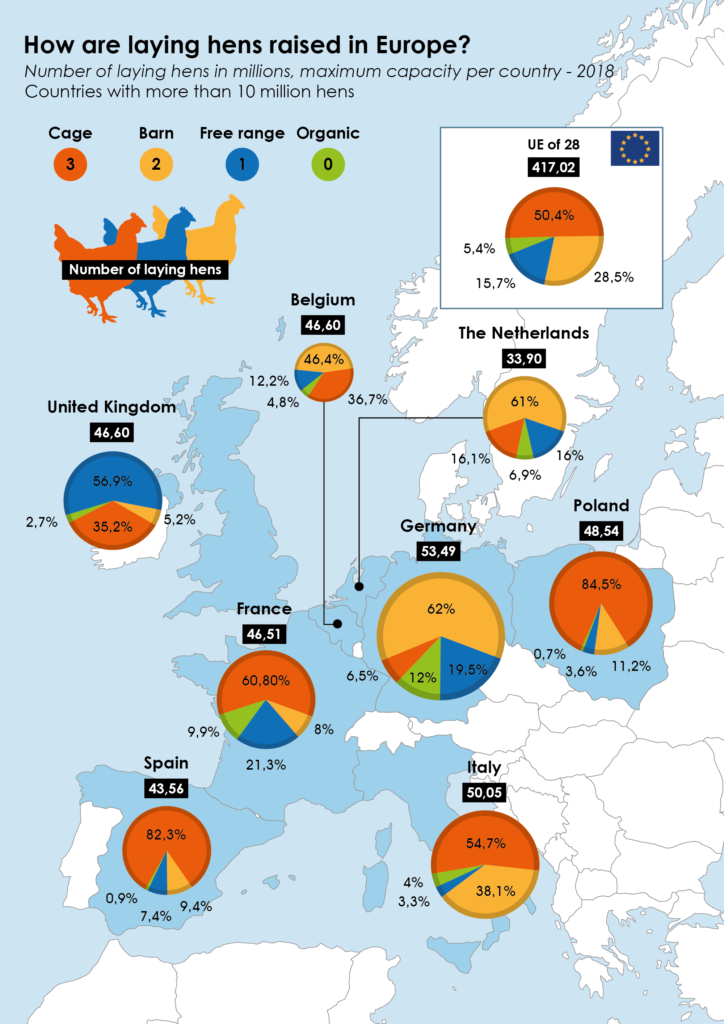> Animals
How laying hens are raised in Europe?
In less than one decade, the way that laying hens are raised and fed in Europe has drastically changed. In 2012, the European Commission has banned conventional cages, moving to “furnished” or “enriched” cages where laying hens have at least 750 cm² of cage area per hen. In alternative systems, the stocking density does not exceed 9 laying hens per m² usable area, with at least one nest for every 7 hens and adequate perches. Whichever system is used, all hens must have a nest, perching space, litter to allow pecking and scratching and unrestricted access to a feed trough. However, consumer demands and the pressure of supermarket chains has accelerated the move from battery cages towards alternative systems, such as deep litter and aviary barns, with or without access to an outdoor area. Organic production with non-beak trimmed hens, under free range conditions, is gaining popularity.
Egg production in alternative systems requires to adapt flock management and nutritional programs. Maintenance requirements are higher in outdoor systems for two reasons. Birds spend more energy due to more physical activities and higher aggressive behavior (feather pecking and cannibalism). And when outside temperature is cold, birds consume energy to maintain body temperature.
Poultry farmed species which are raised outdoor may be in contact with wild birds. Why is egg production system related to the spread of avian flu ? Read “Planet” section !

